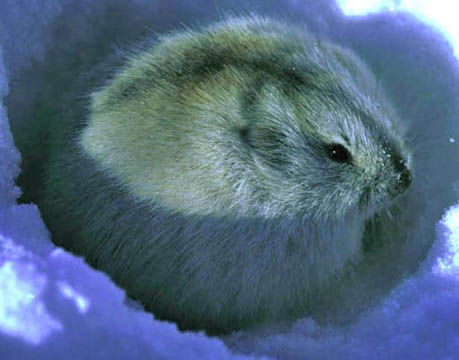

Why lemming populations fluctuate with such great variance roughly every four years, before numbers drop to near extinction, is not known. The Norway lemming and brown lemming are two of the few vertebrates which reproduce so quickly that their population fluctuations are chaotic, rather than following linear growth to a carrying capacity or regular oscillations. Like many other rodents, lemmings have periodic population booms and then disperse in all directions, seeking food and shelter their natural habitats cannot provide. In the spring, they move to higher ground, where they live on mountain heaths or in forests, continuously breeding before returning in autumn to the tundra. They make nests out of grasses, feathers, and muskox wool (qiviut). Their burrows have rest areas, toilet areas, and nesting rooms. These rodents live in large tunnel systems beneath the snow in winter, which protect them from predators.

They remain active, finding food by burrowing through the snow. Lemmings do not hibernate through the harsh northern winter. Like other rodents, their incisors grow continuously, allowing them to feed on much tougher forage. They digest grasses and sedges less effectively than related voles. Lemmings choose their preferred dietary vegetation disproportionately to its occurrence in their habitat. They also forage through the snow surface to find berries, leaves, shoots, roots, bulbs, and lichens. They are herbivorous, feeding mostly on mosses and grasses. They have a flattened claw on the first digit of their front feet, which helps them to dig in the snow. They have a very short tail, a stubby, hairy snout, short legs, and small ears. Lemmings are quite rounded in shape, with brown and black, long, soft fur.


 0 kommentar(er)
0 kommentar(er)
